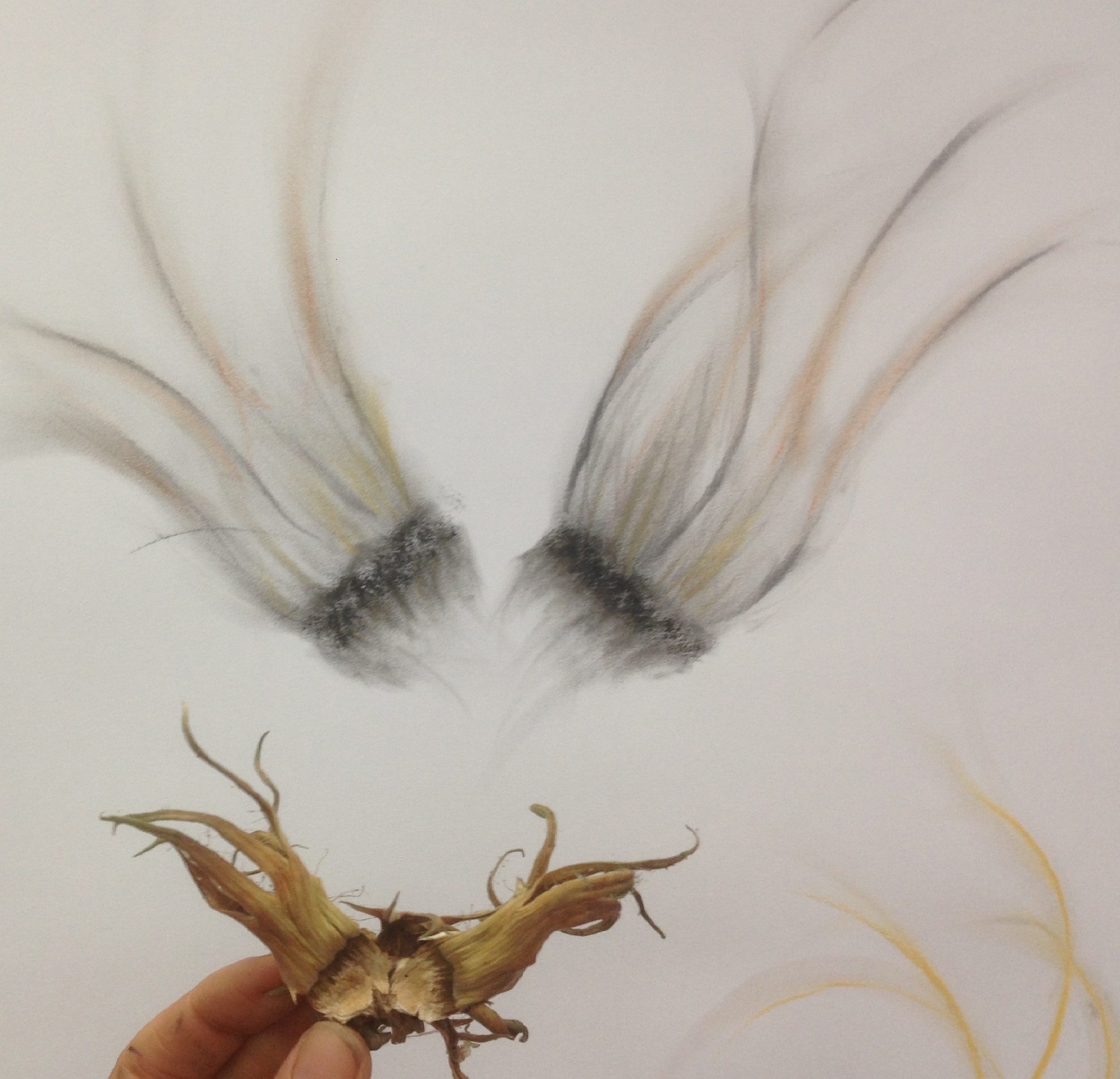
Mindfulness practice involves becoming more aware of our experience in the present moment. Presence of mind can stimulate new ways of thinking, feeling, seeing and being as well as inner calm and resourcefulness.
What we frequently call mindfulness practice, ‘involves purposefully making a time for stopping all outward activity and cultivating stillness, with no agenda other than being fully present in each moment. Not doing anything. Perhaps such moments of non-doing are the greatest gift one can give oneself’ Jon Kabat Zinn
In mindfulness practice, anything can serve as a focus for the practice. We can become mindful/aware of our body, how we feel (both physically and emotionally), our thoughts, other people and the world around us, as well as our relationship to these things.


There are many ways of practising mindfulness and it is an activity that everyone can do.
Some common mindfulness practices include seated mindfulness meditation, mindful drawing, slow looking at nature or art, mindful walking or eating… It’s not a matter of whether you are any good at it or not, it’s about discovering which mindfulness practices work best for you. Numerous studies report that embedding short pauses into one’s day for the mind to rest and come into presence, significantly lowers brain stressors, resulting in more resourcefulness, creative thinking, and perspective.
Engaging mindfulness with art can be very enriching. There is a natural resonance between these two disciplines, in that looking at art as well as art making e.g. drawing, painting, writing… can naturally bring us into the present moment by virtue of them requiring a particular quality of attention in order to connect/create.
Incorporating mindfulness skills into artmaking can help you to become more present and connected to the process of making. This sense of connection and presence can bring many benefits including more aliveness in your drawings/artwork, increased enjoyment, creative flow and greater objectivity when it comes to reviewing what you’ve created and discerning next steps. It can also help to bring perspective and resourcefulness when faced with the vicissitudes of creative practice, it can for example, help free you from the judging mind as well as help you to reconnect to joy and a sense of purpose.
Guided Mindful Looking or Slow Looking at art can help us to see and appreciate individual artworks more fully. In this practice we not only spend time looking and seeing the artwork afresh, but also listen to our responses and learn to trust them so that we can discover our own relationship to the artwork and any meaning or significance it may hold for us as well as contemplate the artists intentions, life circumstances and historical context, which can give us a doorway into new ways of seeing as well as a sense of connection and empathy for another person’s experience.
Another aspect of mindfulness is kindness. Kindness is not ‘niceness, it’s about having an open, curious, respectful and appreciative relationship to ourself and others. Mindful resilience training involves learning to cultivate these qualities and attitudes. Neuroscience has proven that we can re-wire our brain, that we can literally create new habits that support our life and growth. These new habits can become instinctual. This has radical implications for our life in that we can actually consciously learn to think and feel differently. Having practised mindfulness for over 26 years, I have experience of some unhelpful habits and thought patterns having actually dropped away. I thought that they were ‘me’, but they weren’t. I’m thinking of one regular thought pattern in particular right now, that hasn’t happened for about 7 years!
During the Mental Wealth Festival, we are offering a variety of mindfulness and art taster sessions for you to try out. The focus of these will be on stimulating calm, clarity, creativity and resilience. Please join us if you are interested to explore these themes.
Copyright Clare Barton-Harvey 2020


Mental Wealth Festival, 5-10 October 2020
Special thanks to Clare for contributing the following workshops to this year's virtual festival:
Drawing and the art of mindfulness: calm, clarity and resilience
Friday 9 October 2020, 14:30-16:00 with Clare Barton-Harvey
Art and Mindfulness: an introduction (FULL)
Wednesday 7 October 2020, 10:00-12:30 with Clare Barton-Harvey
Mindfulness, creativity and resilience (FULL)
Saturday 10 October 2020, 10:00-12:30 with Clare Barton-Harvey
For the full program of events please visit https://www.citylit.ac.uk/mwf
Bio - Clare Barton-Harvey
Clare is a full-time artist, tutor and freelance teacher/trainer living and working in London. She has been practising mindfulness meditation for over 26 years and has been teaching drawing and mindfulness courses and workshops for over 16 years. She trained with Breathworks mindfulness teacher training in 2006-7 and has devised numerous workshops, courses and retreats exploring the relationship of drawing, mindfulness, creativity, painting and the imagination, in both Buddhist and secular contexts.
She is fascinated by the relationship of art and mindfulness and how they ongoingly offer new ways of seeing, feeling and thinking which can be deeply liberating, refreshing and restorative as well as lead to deeper and more enriched creativity.
Clare has studied drawing, to MA level, at the Royal Drawing School and her artwork is held in private collections across the UK, Europe and America. She works as a freelance drawing and mindfulness teacher/trainer in a variety of locations including The City Lit, The National Gallery, British Museum, British Library, Pallant House Gallery and the Queens Gallery. She is co-founder of LIMINA collective who specialise in bringing together art and audiences through mindful engagement. She is a practising Buddhist and received full ordination into the Triratna Buddhist Order in 2006.











